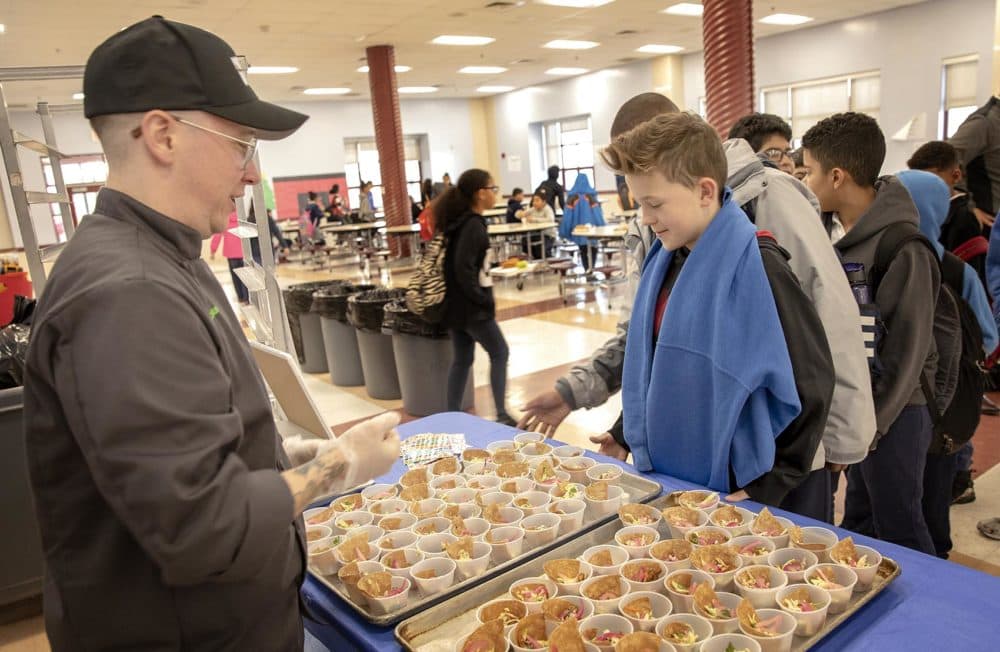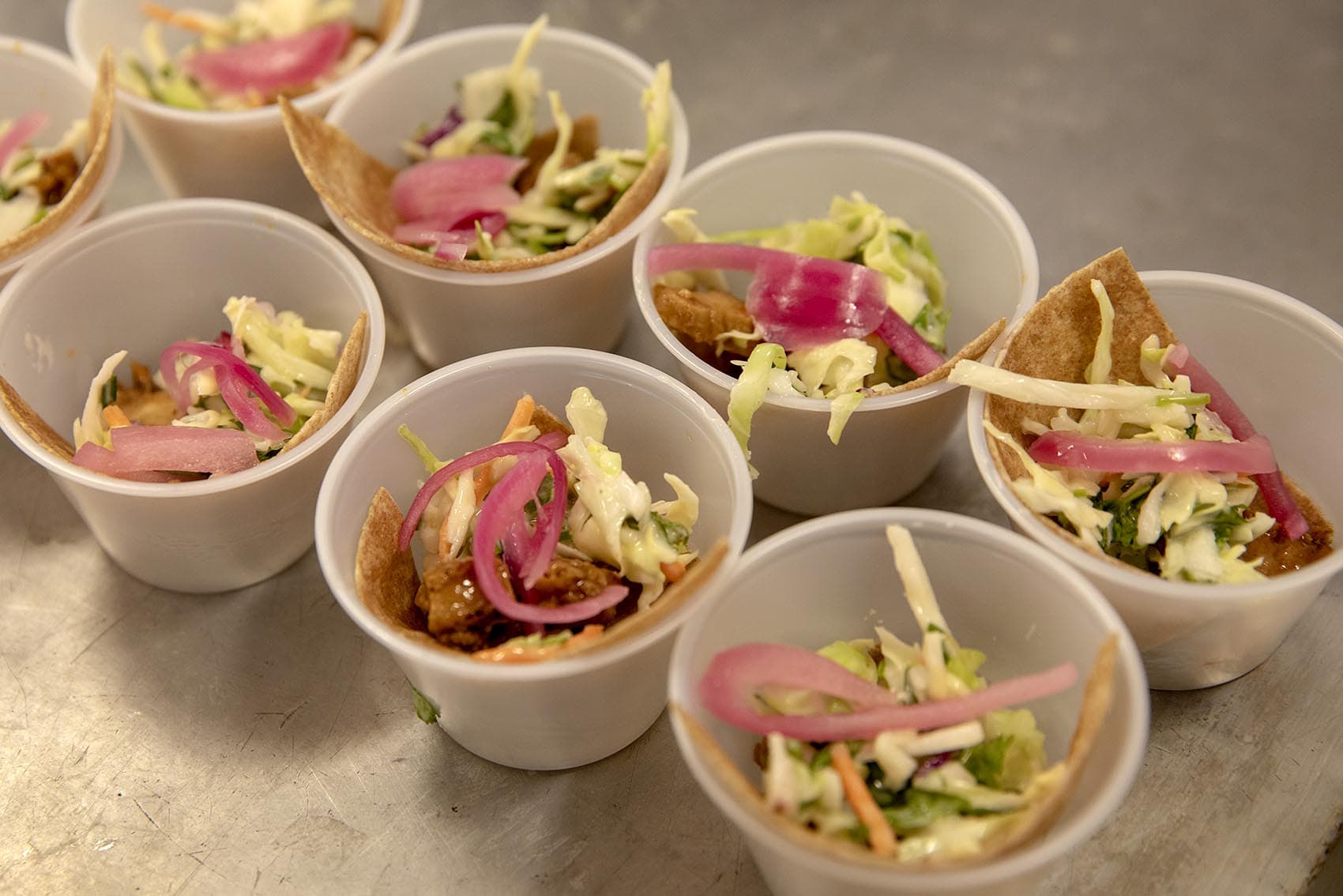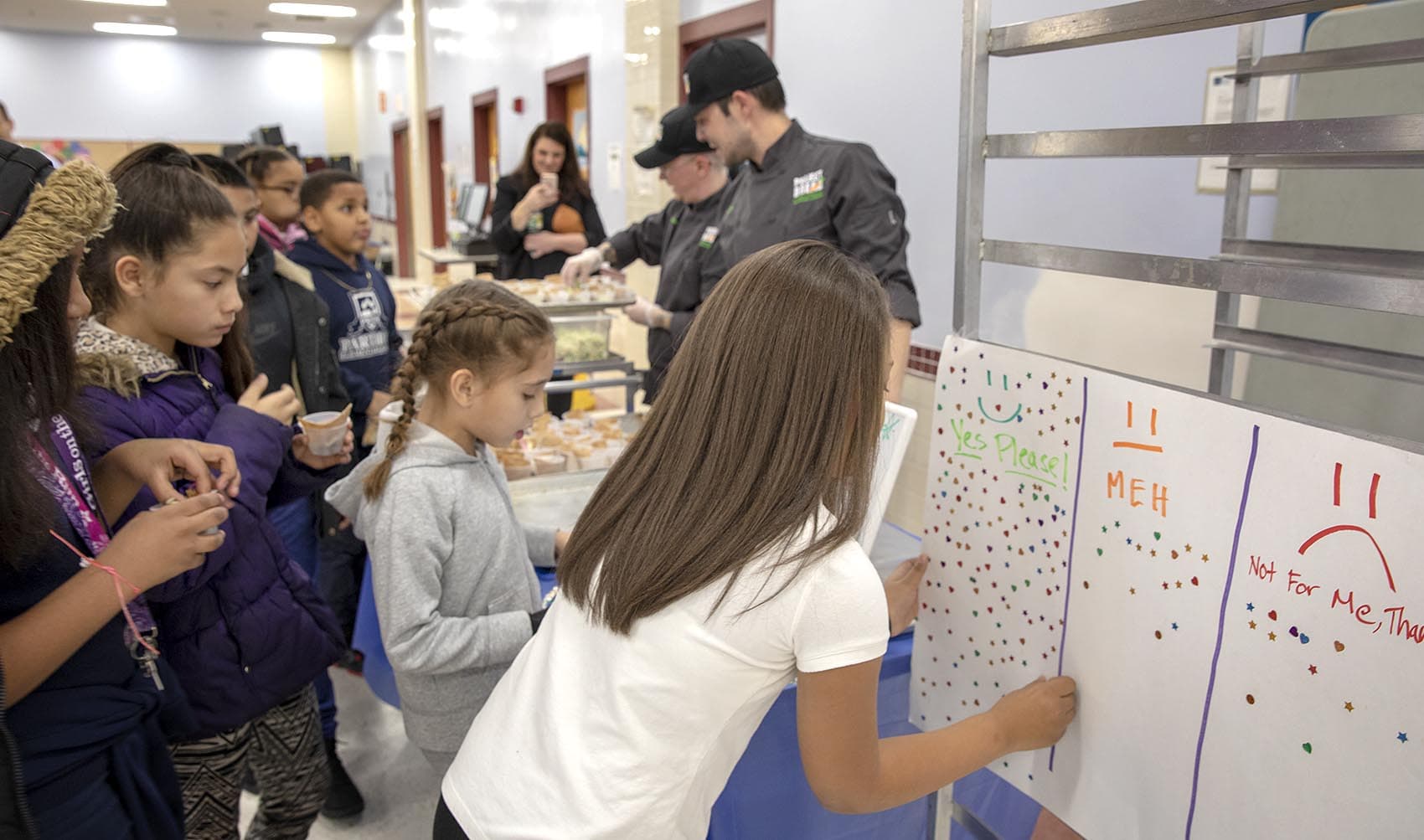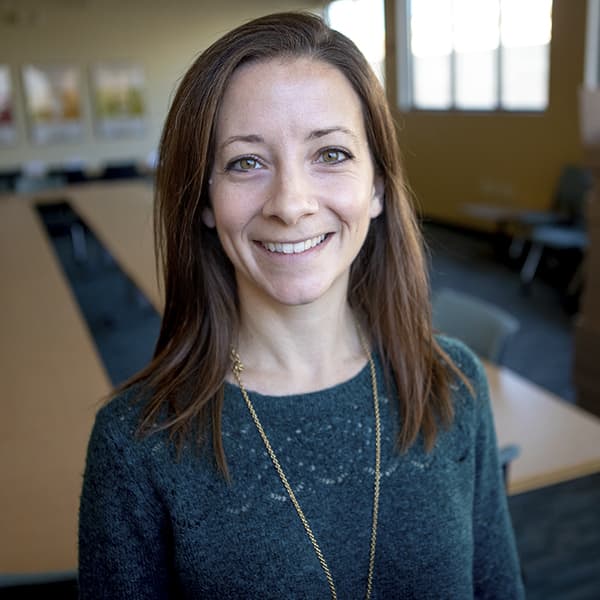Advertisement
'Kids Are Brutally Honest': Program Lets Students Taste Test Healthy, Chef-Made Lunches
Resume
It’s easy to tell if kids like a recipe. Check the trash can.
One by one the kids here at Parthum Elementary School in Lawrence drop their plates into large plastic trash cans before heading to recess. Also getting dumped? A lot of steamed broccoli.
"Kids are brutally honest," says Carol Noonan, manager of nutrition services for Lawrence Public Schools. "They'll tell you if they like it or they don’t like it."
Lately, she says, the district has been striking out with its healthy recipes. But rather than retreating to reliable kid favorites like pizza, the district called in some kitchen reinforcements ... of sorts. Among those ranks is chef Sam Icklan. Today, Icklan is running a taste test for a new recipe: Korean chicken tacos.

"These are pickled red onions," explains Icklan, as students approach the sample table. "This adds a little extra love to the dish."
Icklan is the director of a program known as Chefs in Schools. Chefs in the program temporarily join cafeteria staff in Massachusetts, like the folks at Parthum Elementary, and help them develop healthy recipes kids actually like.
Because the school is trying to keep the salt content down, Icklan adds flavor to these tacos with pickled onions and douses the vegetable slaw with some lime juice and cilantro.
A group of fourth-graders approach the table not quite sure what to make of the colorful cups. Hanna Fitzgerald is one of them.
"I think I like it because it’s sort of spicy," she says. "And I like spicy things."
Her classmates are mostly in agreement. While the onions weren't a crowd favorite, the veggie slaw was mostly a hit. And no one seemed to notice that the tortilla was whole wheat.
But getting to this point, with mostly rave reviews on healthy menu items, took Icklan's team several taste tests and time to get to know this group of students. A good helping of creativity was also necessary, because unlike restaurants, school cafeterias work on a tight budget.
"If you’re a chef in a restaurant, you can buy whatever you want, you can work with whatever you want. But in the schools, there’s a pretty standard set of ingredients," says Icklan. "And they’re doing what they can with what they have."
In the last decade cafeteria staff have also had to meet increasingly strict nutrition standards. Erin McAleer, president of Project Bread, an anti-hunger organization that runs the Chefs in Schools program, admits that can be a delicate balance.
"There’s a lot of strategy behind it. It’s also providing the food that kids will eat," she says. "It’s not solving the problem if you’re serving food that they’re just going to throw away."

It’s a debate that many parents are familiar with. Do you serve kids food you know they’re going to eat, so they at least have some calories to run on? Or do you prioritize getting the nutrients needed for brain development? Food insecurity impacts about 1 in 8 children in Massachusetts. For those students, the food served at school accounts for around half of their daily calorie intake, making this debate even more acute for the school systems that serve them.
That's part of why Congress passed the Healthy Hunger Free Kids Act in 2010 requiring schools to fill their vending machines with healthy snacks, cut back on sodium, and serve more whole grains.
"Thanks to a lot of efforts from a lot of people in Washington we raised the bar," says Eric Rimm, a professor of nutrition at the Harvard T.H. Chan School of Public Health. Because of that law, Rimm says programs like Chefs in Schools have exploded around the country.
So far, these efforts are proving successful in the mission to get healthier food into kids' bellies. A 2012 study examining the Chefs In Schools program found kids who went to a participating school ate two more servings of vegetables a week. Those students also chose whole grain options at roughly twice the rate of kids whose schools didn't have a chef tweaking the recipes.
Still, moves to tighten regulations around school lunch aren't loved by everyone.
"It’s been something that’s been under discussion for years," explains Rimm. "Small steps have been taken forward and backwards."
One of those steps back, Rimm argues, was just finalized from the USDA.
This month the agency relaxed some of its regulations around school lunches. Cafeterias will now have greater flexibility to use ingredients like sodium, white bread and flavored milk. Officials with the USDA say the move is intended to reduce food waste.
"It doesn't do any good to serve nutritious meals if they wind up in the trash can," U.S. Secretary of Agriculture Sonny Perdue writes in a statement.
But a 2015 study published by the National Institutes of Health suggests the 2010 rules didn't result in more food waste.
"Kids were eating the healthier school meals," says Juliana Cohen, the study's lead researcher and assistant professor of nutrition at the School of Health Sciences at Merrimack College. She explains the study also revealed that food waste was an issue long before 2010.
Nutritionists like Rimm and Cohen say that while schools have come a long way from the days of mystery meatloaf and hot dogs, policy shifts like the one the USDA made could stall that progress.
This segment aired on December 21, 2018.

